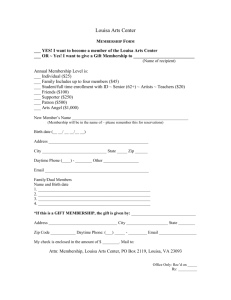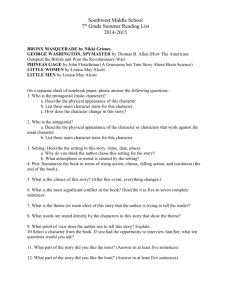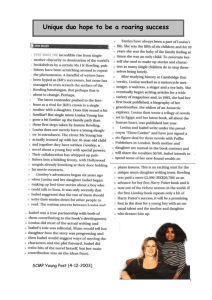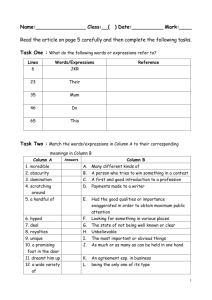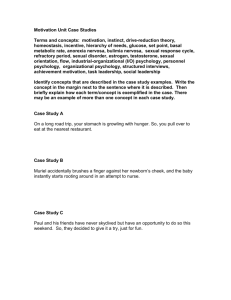Des Moines Register 06-26-06 County brings dollars home
advertisement
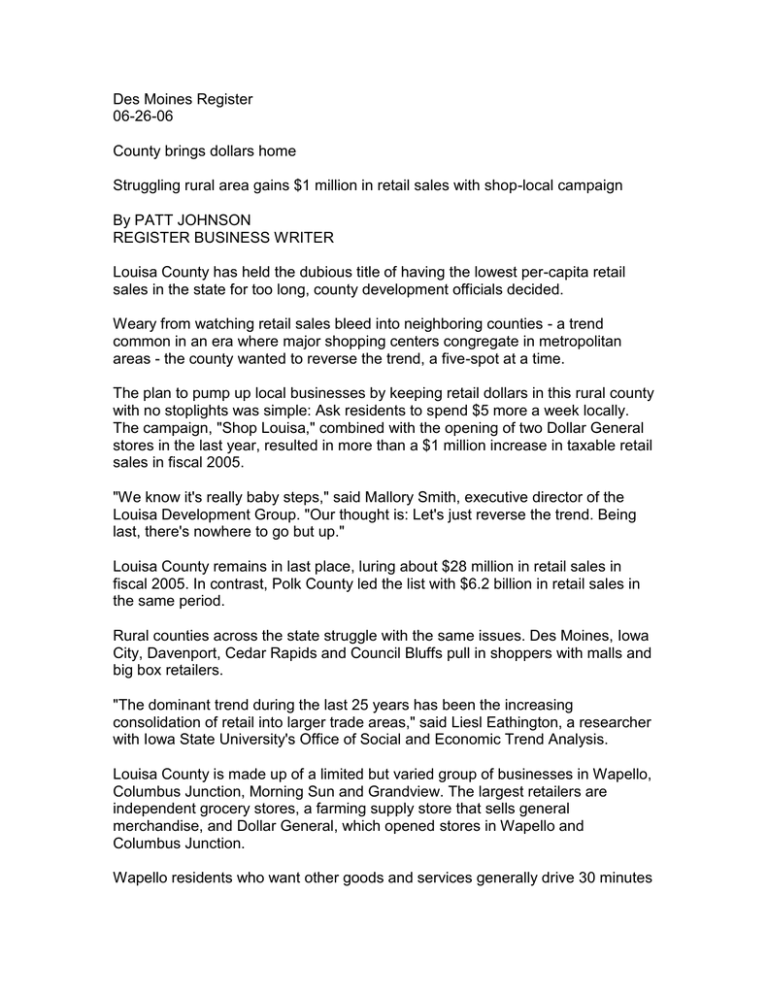
Des Moines Register 06-26-06 County brings dollars home Struggling rural area gains $1 million in retail sales with shop-local campaign By PATT JOHNSON REGISTER BUSINESS WRITER Louisa County has held the dubious title of having the lowest per-capita retail sales in the state for too long, county development officials decided. Weary from watching retail sales bleed into neighboring counties - a trend common in an era where major shopping centers congregate in metropolitan areas - the county wanted to reverse the trend, a five-spot at a time. The plan to pump up local businesses by keeping retail dollars in this rural county with no stoplights was simple: Ask residents to spend $5 more a week locally. The campaign, "Shop Louisa," combined with the opening of two Dollar General stores in the last year, resulted in more than a $1 million increase in taxable retail sales in fiscal 2005. "We know it's really baby steps," said Mallory Smith, executive director of the Louisa Development Group. "Our thought is: Let's just reverse the trend. Being last, there's nowhere to go but up." Louisa County remains in last place, luring about $28 million in retail sales in fiscal 2005. In contrast, Polk County led the list with $6.2 billion in retail sales in the same period. Rural counties across the state struggle with the same issues. Des Moines, Iowa City, Davenport, Cedar Rapids and Council Bluffs pull in shoppers with malls and big box retailers. "The dominant trend during the last 25 years has been the increasing consolidation of retail into larger trade areas," said Liesl Eathington, a researcher with Iowa State University's Office of Social and Economic Trend Analysis. Louisa County is made up of a limited but varied group of businesses in Wapello, Columbus Junction, Morning Sun and Grandview. The largest retailers are independent grocery stores, a farming supply store that sells general merchandise, and Dollar General, which opened stores in Wapello and Columbus Junction. Wapello residents who want other goods and services generally drive 30 minutes north to Muscatine or south to Mount Pleasant. Regional mall shopping is farther away in Coralville. Louisa County's taxable retail sales had been declining in the past decade. In 1995, taxable sales totaled $26.42 million and in 2000, sales had dropped to $25.27 million, Smith said. When local business leaders formed the Louisa Development Corp. in 2004, they decided to recapture some of the retail sales leaving the county. "People shop where they work, and a lot of people here work outside the county," Smith said. Statistics show that 53 percent of Louisa residents work in other counties. Smith came to the county as part of a Peace Corps fellowship while pursuing her master's degree at Western Illinois University. She studied Louisa County statistics and discovered the dead-last ranking for per-capita retail sales. She decided Louisa Development Corp. could do something about the situation. What resulted was a fairly simple plan to bring dollars back home. "We set very realistic goals. We figured $5 a week was doable," Smith said. The group suggested practical ways to meet the goal, including buying lunch, fishing bait, shotgun shells, light bulbs, cat food and batteries locally. They also pointed out practical benefits: Buying locally means personal service, quality and more jobs. "We did not expect that they would completely change their habits, but modify them," Smith said. The benefits of having a healthy Main Street reach beyond civic pride, said Mark Edelman, a professor of economics and director of the Community Vitality Center at Iowa State University. Counties, like Louisa, that have a local option sales tax depend on that money to finance school improvements, he said. The Louisa Development Corp. paid for the campaign with donations from local banks. It advertised in the local newspaper, mailed information to residents, put up "Shop Louisa" signs in businesses and banks, and had members speak to local clubs and organizations. At the end of 12 months, the efforts paid off. Most retailers said their tills showed a slight improvement, and overall the campaign made people think more about the economic health of their communities. Jodi Boysen, who has operated J.D.'s Irish Ivy florist and gift shop in Wapello for 15 years, said customers have come in saying, "I'm spending my $5 in your shop." "I can't see things blossoming big time because of this," Boysen said. "I think the program has good intentions behind it. It will just take time to grow." Some residents said it was a painless transition. "I have made a very conscious effort to fill up my car with gas in the county," said Kent Wollenhaupt, president of State Bank of Wapello. "I used to buy it wherever I was. Now I'll buy gas before I leave the county or wait until I get back." He also does all his grocery shopping in town and uses a local veterinarian, among other services. Carmen Legaspi, who runs La Reyna, a Mexican grocery store and restaurant in Columbus Junction, said she talks to customers about the Shop Louisa program. "I love the idea," she said. "We need more people to shop here instead of other places. Then the money can stay in town." The majority of her grocery business comes from Hispanics, who work at the local Tyson Foods plant, while most of her restaurant business comes from Anglos, she said. "The Anglos are more involved in the shop locally program," she said. "The Spanish people like to go out of town to shop, like on the weekends." The Shop Louisa program began its second year in January. Smith said residents are now encouraged to spend a little more locally. "We're looking for another $1 million this year," she said. "We think whatever switches they made last year are habit now, and we're asking them to add another $5."
